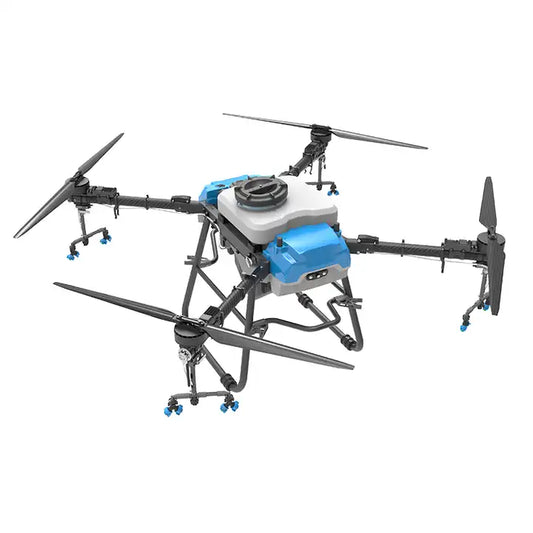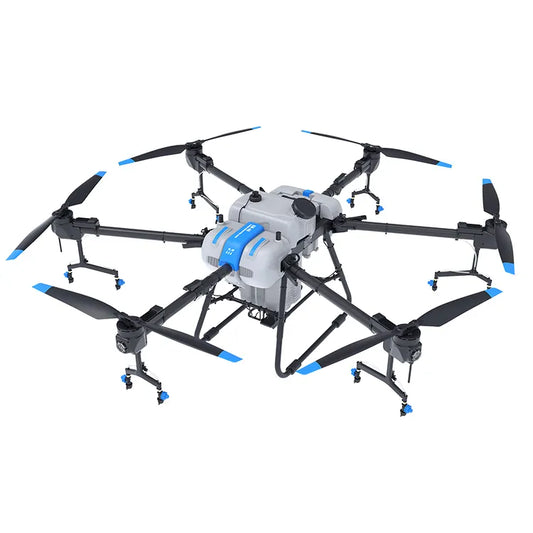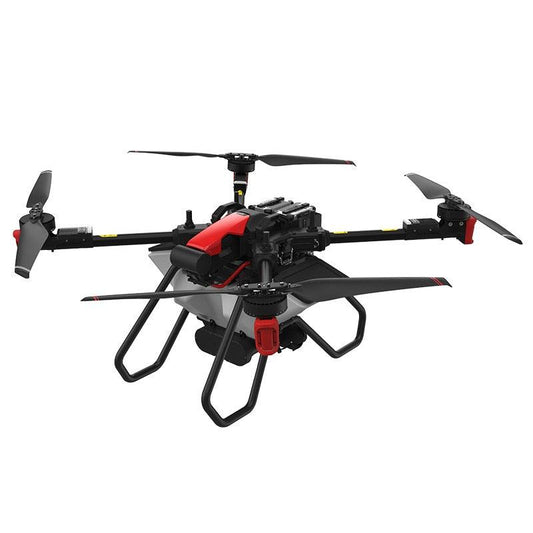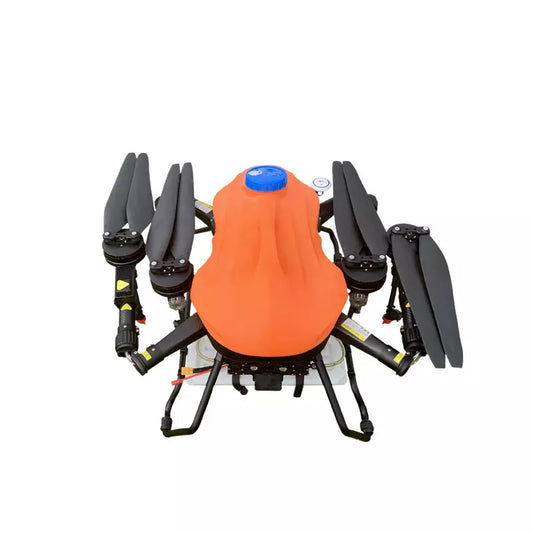Collection: 40L Agriculture Drone
40L Agriculture Drone
A 40L Agriculture Drone denotes an unmanned aerial vehicle with a substantial liquid payload capacity of 40 liters. These drones are typically utilized for large-scale agricultural spraying tasks, such as distributing fertilizers, pesticides, or herbicides over vast areas of land. The specifics can fluctuate depending on the brand and model, but below is a general guide:
Advantages of a 40L Agriculture Drone:
-
Enhanced Efficiency: A drone with a 40L capacity can carry more liquid payload, meaning it can continue operating for longer periods before requiring a refill. This leads to a more efficient operation, saving time and reducing labor costs.
-
Improved Coverage: With its large capacity, a 40L drone can cover more ground in a single flight, making it ideal for large farms and expansive agricultural operations.
-
Precision Application: Drones equipped with GPS and other advanced technologies can apply liquids very accurately, minimizing waste and potentially improving crop yields.
Spray Area and Flight Time:
-
Spray Area: The area a 40L drone can cover in a single flight will depend on several factors, including spray rate, drone speed, and flight altitude. However, as a rough estimate, you might expect a 40L drone to cover around 40-50 acres per flight, although this could vary.
-
Flight Time: Flight time will vary depending on factors such as drone weight, speed, weather conditions, and the payload carried. For a 40L drone, you might expect flight times of around 20-30 minutes per battery charge.
Supporting Components:
-
Airframe: The main body of the drone, including the structure and arms that hold the motors and propellers.
-
Motors and Propellers: These components provide the power necessary to lift and maneuver the drone.
-
Battery: Powers the drone. A larger drone like this one typically requires larger, more powerful batteries.
-
Spraying System: Includes the tank (with a 40L capacity in this case), pump, and nozzles that spray the liquid.
-
Flight Controller: The drone's onboard computer system that controls flight.
-
GPS Module: Allows the drone to pinpoint its location and follow pre-planned flight paths.
-
Remote Controller: Used by the operator to control the drone.



